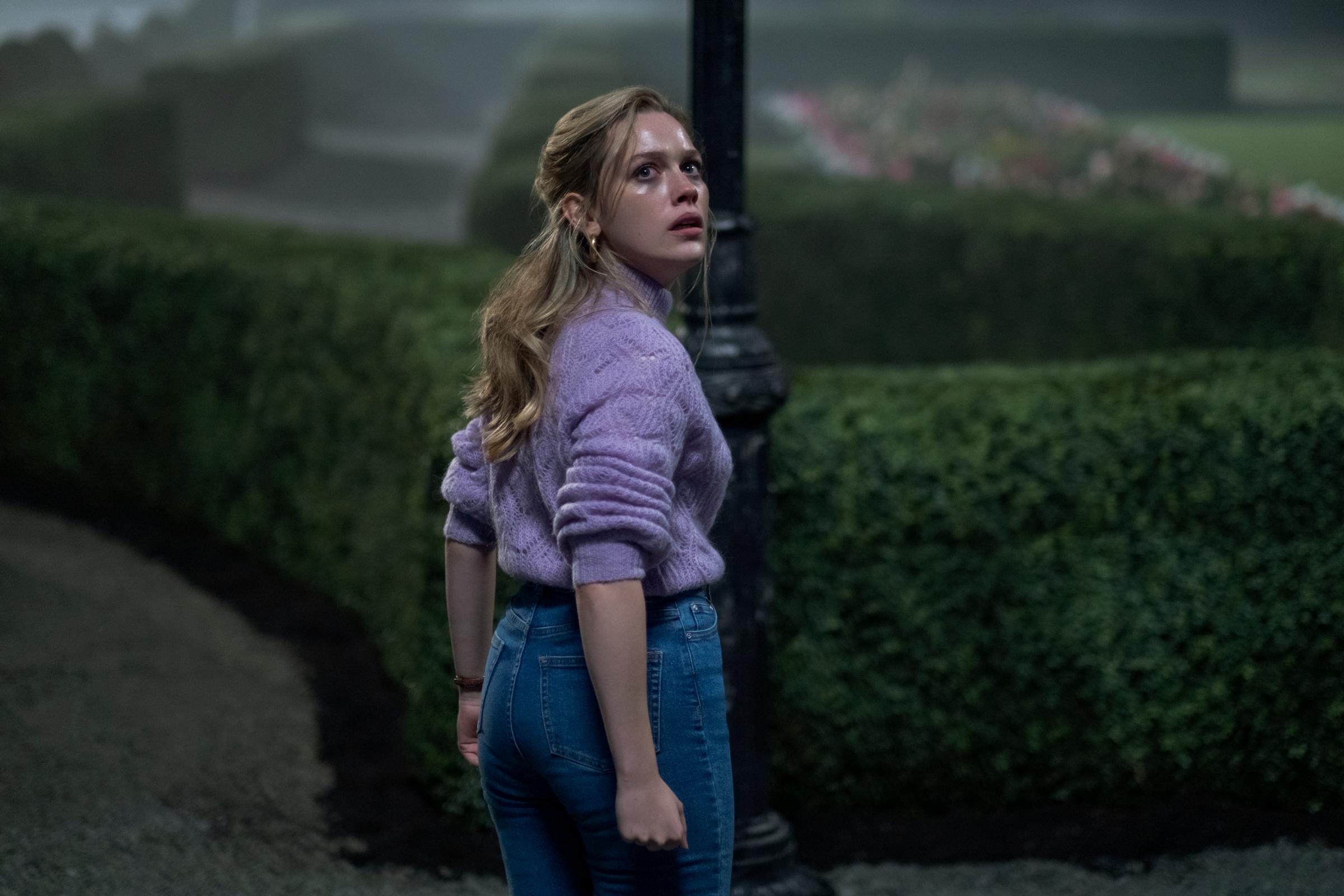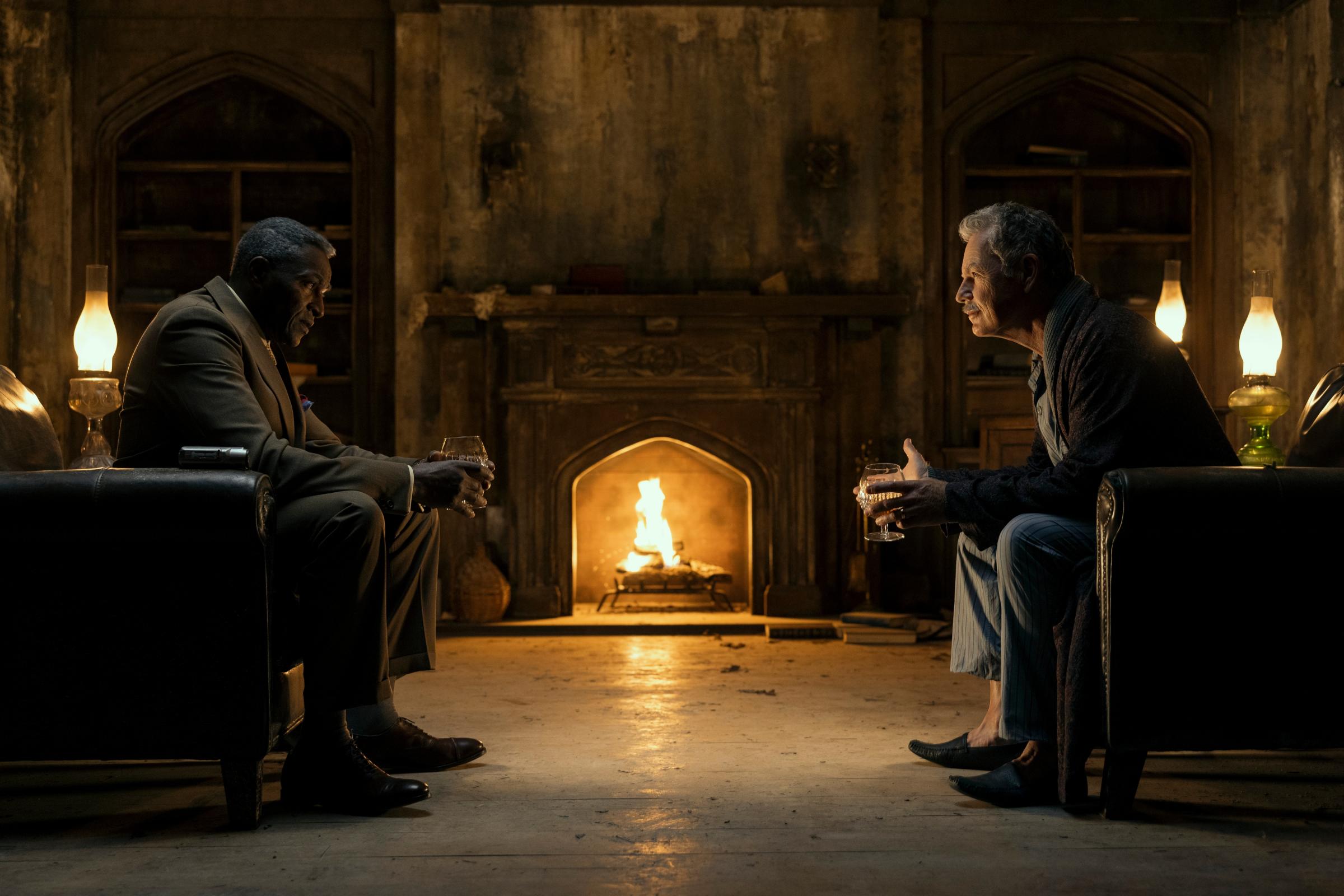For fans of Netflix horror master Mike Flanagan, the Oct. 12 premiere of his latest show, The Fall of the House of Usher, is bound to be bittersweet. The good news is that House of Usher, an adaptation of not just the eponymous story, but of Edgar Allan Poe’s bibliography at large, is up there with his best efforts—a return to form for a creator who went a bit astray with last year’s The Midnight Club. The bad news is that it will likely be his last series for Netflix, after Flanagan and his Intrepid Pictures partner Trevor Macy signed an overall deal with Amazon in late 2022.
To mark the occasion, and celebrate a remarkable run, I’ve ranked the five single-season shows Flanagan has made for Netflix from worst (which isn’t really so awful) to best, with a bit of extra ink on the sublimely vindictive new House of Usher.
5. The Midnight Club

In my estimation, Flanagan has only made one disappointing season of TV, and this is it. Drawing on unexpected source material for a creator who likes to remix literary classics—the YA horror novels of Christopher Pike—The Midnight Club is set at a hospice for teens. It’s 1994, a year when Pike’s books were flying off middle-school library shelves. Positive-thinking heroine Ilonka (Iman Benson) arrives convinced that the place can cure her terminal cancer. She soon stumbles upon the Midnight Club, a secret nightly gathering where the residents laugh in the face of death by telling each other scary stories that come straight out of Pike’s other work.
There are some wonderful performances here, namely from Ruth Codd (who returns in House of Usher) as Ilonka’s bitter, angry roommate. But the teen-hospice setting limits Flanagan and co-creator Leah Fong’s ability to capitalize on some of his previous shows’ greatest strengths, from rampant psychosexual intrigue to an excellent troupe of adult actors that included Carla Gugino, Kate Siegel, and Victoria Pedretti. Instead of subjecting sick kids to gruesome horrors, The Midnight Club reserves its most grotesque moments for the stories they tell. But the decision to devote so much runtime to these tangentially related tales detracts from the characters, robbing their poignant predicament of specificity and emotional weight.
4. The Haunting of Hill House

Flanagan’s first Netflix series became a huge surprise hit—and for many of his fans, this extremely loose adaptation of Shirley Jackson’s National Book Award finalist remains the impossibly high standard against which everything he’s done since must be judged. That’s understandable. Like I said, once you get past Midnight Club, there’s not a failure on this list. How you rank the three middle-of-the-pack entries, in particular, is a matter of taste more than quality.
Hill House pulled in viewers with something that can be hard to find in the horror genre: emotional realism. Straddling the early 1990s and the present, it follows the Crains, a big family that lost its matriarch (Gugino) in the eerie mansion she was helping her husband fix up to flip when the five children were still kids. Each has since been wrestling with grief over her death—and confusion about what really happened in the house the night their father (Timothy Hutton) hustled them into the car while their mom remained inside. Episodes devoted to each child explore their respective damaged psychological landscapes in turn. This is all elegantly done. But, at 10 episodes, the show drags in the second half of the season. Its trauma plot doesn’t have the originality of a Bly Manor or a Midnight Mass. Most of all, I questioned why so many female characters had to die in the service of repairing a father-son relationship.
3. The Haunting of Bly Manor

Bly Manor over Hill House? It’s not a popular opinion, I know. And I’ll admit that Flanagan’s second series gets off to a pretty slow start. But, for me, the profound places it ends up going more than justify a sluggish first few episodes. In 1987, a young woman named Dani (Pedretti) is hired to teach and care for two orphaned children at their wealthy uncle’s country estate in the English countryside, following their previous caregiver’s suicide. You guessed it: we’re in an updated take on Henry James’ Gothic novella The Turn of the Screw.
As Dani gets to know her new co-workers on Bly Manor’s household staff, the question arises of why so many talented, once-ambitious people have remained in the “gravity well” of the estate for so many years. Standout performances by T’Nia Miller as the housekeeper and Rahul Kohli as the chef (both return in House of Usher) paint observant portraits of characters trapped in the domestic sphere by various forms of inequality, most prominently the caste divisions that support their existences as 24/7 servants to an absent owner. What makes this symbolism work so well is that it isn’t a thematic stretch on Flanagan’s part; class anxiety is written into the very fabric of James’ work, and never more hauntingly than in The Turn of the Screw. Also: Bly Manor ends with one hell of a final twist—my favorite Flanagan kicker to date.
2. The Fall of the House of Usher

Flanagan’s The Fall of the House of Usher opens in much the same way as the Edgar Allan Poe story of the same name: A man arrives at a decrepit home, summoned by an old acquaintance who is deathly ill. But from there, the series expands in directions both typical and wildly unexpected. Like Flanagan’s other adaptations, it riffs on plots and motifs from the author’s most famous works—“The Raven,” “The Tell-Tale Heart,” “Annabel Lee,” “The Pit and the Pendulum.”
Yet House of Usher also dares to bring Poe into the most contemporary of contexts, reimagining the unfortunate Roderick Usher (Bruce Greenwood) as the patriarch of an opioid empire in the mold of the Sacklers’ Purdue Pharma. A series of what appear to be tragic coincidences has just befallen the family: Roderick’s six adult children (by five different mothers) have all died, gorily, one after the other. Now afflicted with nightmarish delusions, he has promised a confession to the attorney, Carl Lumbly’s C. Auguste Dupin, who has spent decades laboring to catch the Ushers, whose drugs have killed hundreds of thousands, engaged in illegal activities.
It’s quite a long story. Weaving together the past—Roderick and his beloved twin sister Madeline’s (Mary McDonnell) unhappy 1950s childhood, then his rise to power as a young father (Zach Gilford) on the cusp of the ’80s—and the present, it recounts each heir’s untimely demise. A spectral, shapeshifting character played by Gugino appears to each of the Ushers in turn. While the setting is ultra-modern, the atmosphere is archetypally Gothic. Shadows loom. Ravens hover. Psyches suffer. Generous excerpts of Poe’s most morbid texts are recited.
House of Usher is, however, anything but a bummer. More propulsive than any other series in Flanagan’s slow-burning canon, it can also be quite funny. Roderick’s magnificently named children, from aspiring nightlife impresario Prospero (Sauriyan Sapkota) to Kate Siegel’s dagger-tongued PR czar Camille, are hilariously, debaucherously awful. Often, the show feels like a broader, spookier riff on Succession. (In fact, Roderick’s two eldest offspring have more than a little in common with Kendall and Shiv Roy.) If the script gets a bit preachy in the end, well, House of Usher still brings more insight into the evils of supply and demand to its depiction of pharmaceutical profiteers than the many straightforward docudramas that preceded it.
1. Midnight Mass

It’s a testament to Flanagan’s abilities as a storyteller that the very best of the five Netflix series he’s created is also the only one that came straight out of his imagination. Gilford stars as Riley Flynn, a prodigal son who returns from Chicago to the tiny island community where he grew up, now a recovering alcoholic haunted by the teen girl he killed in a drunk-driving accident. Crockett Island is a religious place, but Riley—once an altar boy—has lost his faith. Thankfully, or not, there’s also an enthusiastic new priest in town: Father Paul Hill, portrayed in a gloriously unhinged performance by Hamish Linklater. Miracles start to happen. But religious fervor of the kind Father Paul awakens rarely leads to happy outcomes; Crockett descends into chaos.
Midnight Mass delivers some of the biggest, craziest, most delightfully bizarre set pieces in the Flanagan oeuvre. Two years after it debuted, there are bonkers plot twists that I’m still avoiding here because I don’t want to spoil anyone’s surprise. But these moments are only a small part of what makes the series his masterpiece. Religious anxiety—as it afflicts true believers, non-believers, and hypocrites—is a common theme but one that’s hard to execute without defaulting to cliché. Flanagan uses the outsize imagery of horror to explore different flavors of faith and doubt with nuance. Neither vindicating nor condemning the devout, he suggests that unquestioned fealty to whichever god one worships might be the most dangerous thing of all.
More Must-Reads from TIME
- Donald Trump Is TIME's 2024 Person of the Year
- Why We Chose Trump as Person of the Year
- Is Intermittent Fasting Good or Bad for You?
- The 100 Must-Read Books of 2024
- The 20 Best Christmas TV Episodes
- Column: If Optimism Feels Ridiculous Now, Try Hope
- The Future of Climate Action Is Trade Policy
- Merle Bombardieri Is Helping People Make the Baby Decision
Contact us at letters@time.com